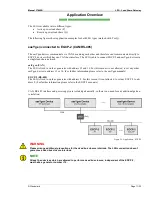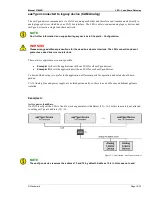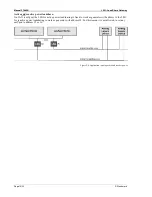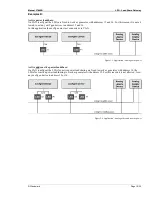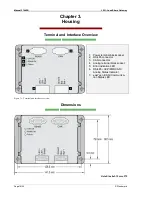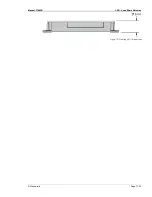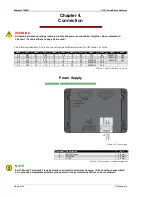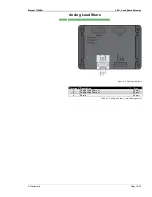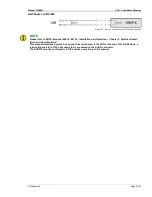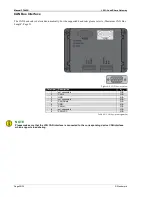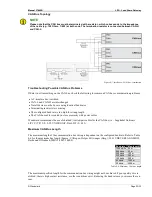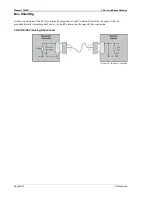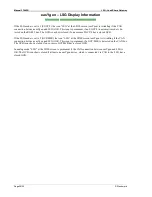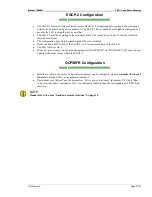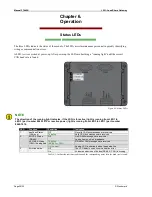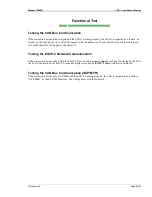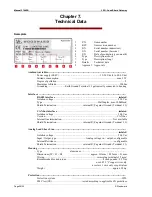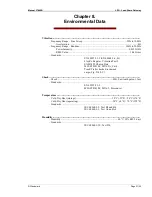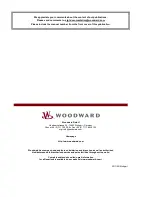
Manual 37442B
LSG - Load Share Gateway
© Woodward
Page 25/32
Chapter 5.
Configuration
LSG Configuration
≡≡≡≡≡≡≡≡≡≡≡≡≡≡≡≡≡≡≡≡≡≡≡≡≡
•
The LSG does not need to be configured.
•
The LSG is receiving his operation mode via CAN from the easYgen with the
lowest
address.
•
The CAN baud rate will be detected automatically.
•
The RS-485 parameters are fixed.
•
The LSG transmits always
segmentnumber 1
.
easYgen Configuration
≡≡≡≡≡≡≡≡≡≡≡≡≡≡≡≡≡≡≡≡≡≡≡≡≡
The operation mode of the LSG must be configured by the parameter 5568 of the easYgen.
Operation Modes
No.
Device
Internal Resistance | Voltage Range
0
Off
-
1
Woodward EGCP-2
RS-485 (
P
&
Q
)
1
2
Woodward SPM-D
R
= 4.99k |
P
: 0 − 4V (0 to 100%) |
Q
: 0 − 5V (-85% to +85%)
MFR 15
R
= 4.99k |
P
: 0 − 4V (0 to 100%)
3
Woodward 2301 A
R
= 54.90k |
P
: 0 − 3V (0 to 100%)
4
Caterpillar LSM
R
= 25.00k |
P
: 0 − 3V (0 to 100%)
5
Cummins
PCC 3100; PCC 3200; PCC 3201;
PCC 3300
R
= 5.00k |
P
: 0 − 2.5V (-14.1 to 121.9%) |
Q
: 0 − 2.5V (-16.7% to +125.3%)
6
POW-R-CON
R
= 20.67k |
P
: 0 − 5V (0 to 100%)
2
7
Prepared
3
R
= 25.00k |
P
: -5 − +5V (0 to 100%)
2
8
Prepared
3
R
= 25.00k |
P
: 0 − 7V (0 to 100%)
2
9
GCP/MFR
CAN (
P
&
Q
)
1
−
easYgens and GCP/MFR share the same CAN bus
10 to 15
Not defined
-
Table 5-1: easYgen configuration
1
Operation mode supports one LSG device. This single device is able to share P and Q.
2
If this setting is reactive power mode, the voltage is representing a Q range: -100% to +100%
3
For Load Share devices that meet the specifications shown in the table above.
•
If the operation mode is not 0, the device numbers 15/ 16 are reserved for the LSG, the easYgen device
numbers must not be configured as 15 and16.
•
The loadshare CAN ID must be set to 5xx (=default Value).
•
The baud rate of the load share bus must be configured to
125kb
in the GCP/MFR mode (the baud rate
of the GCP/MFR is fixed to this baud rate).
•
In GCP/MFR mode the CAN IDs 181h to 18Eh are reserved for the GCP/MFR. It is
not allowed
to use
these IDs for other things e.g. transmit PDOs.
NOTE
Please refer to the note “Dead bus closure interlock” on page 12.

